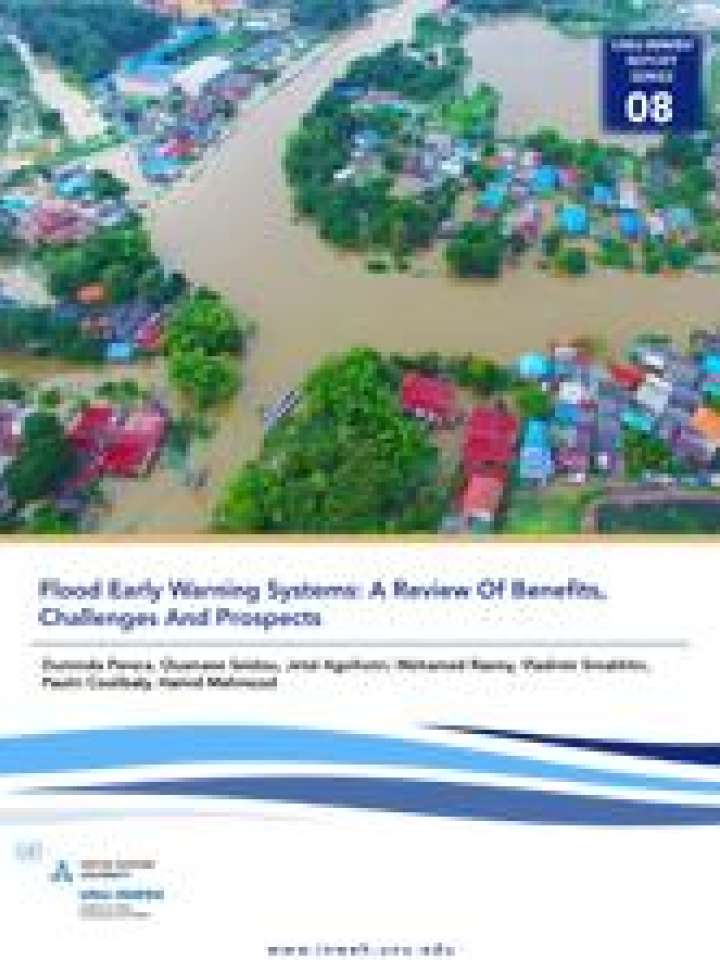Flood early warning systems: A review of benefits, challenges and prospects
Despite widespread recognition of the importance of flood early warning systems (FEWS) for disaster risk reduction, there's a lack of information on their availability and status around the world, their benefits and costs, challenges and trends associated with their development.
This report attempts to bridge these gaps. A comprehensive online survey with over 80 questions on various components of FEWS (risk knowledge, monitoring and forecasting, warning dissemination and communication and response capabilities), investments into FEWS, their operational effectiveness, benefits and challenges was conducted.
About 75% of responses indicate that river basins have inadequate hydrological network coverage and back-up equipment. Almost half of the responders indicated that their models are not advanced and accurate enough to produce reliable forecasts. Lack of technical expertise and limited skilled manpower to perform forecasts was cited by 50% of respondents.
To improve global knowledge on FEWS' status and implementation in the context of the Sendai Framework and SDGs, the report's recommendations include: i) coordinate global investments in FEWS development and standardize investment reporting; ii) establish an international hub to monitor the status of FEWS in collaboration with the relevant national agencies; iii) develop a comprehensive, index-based ranking system for FEWS according to their effectiveness in flood disaster mitigation; and iv) improve coordination between institutions responsible for flood forecasting and those responsible for communicating warnings and community preparedness and awareness.
Explore further
